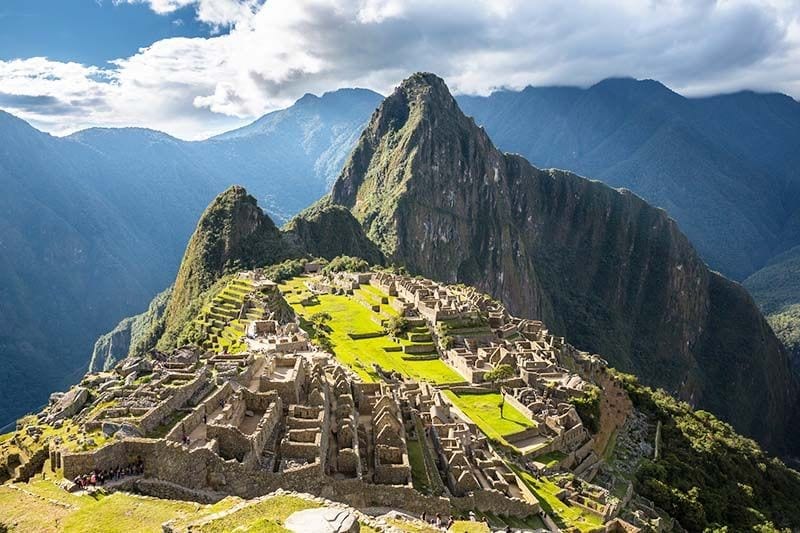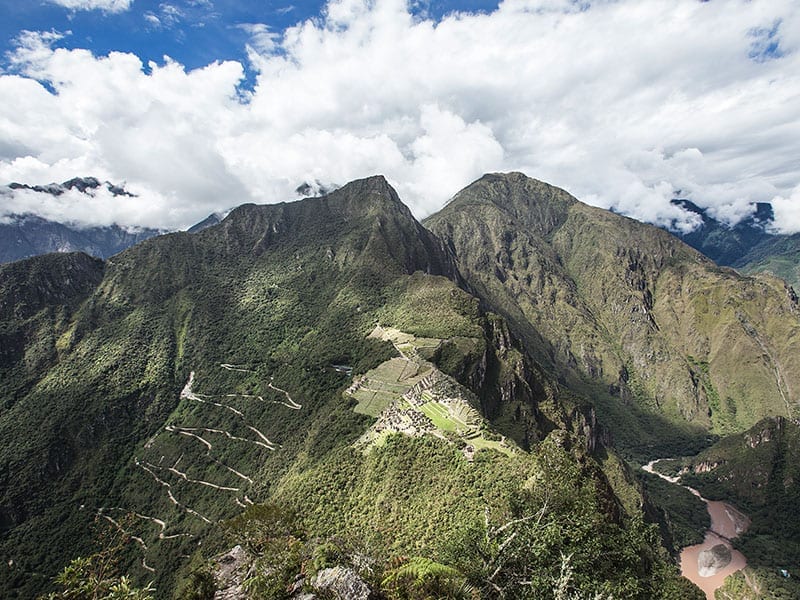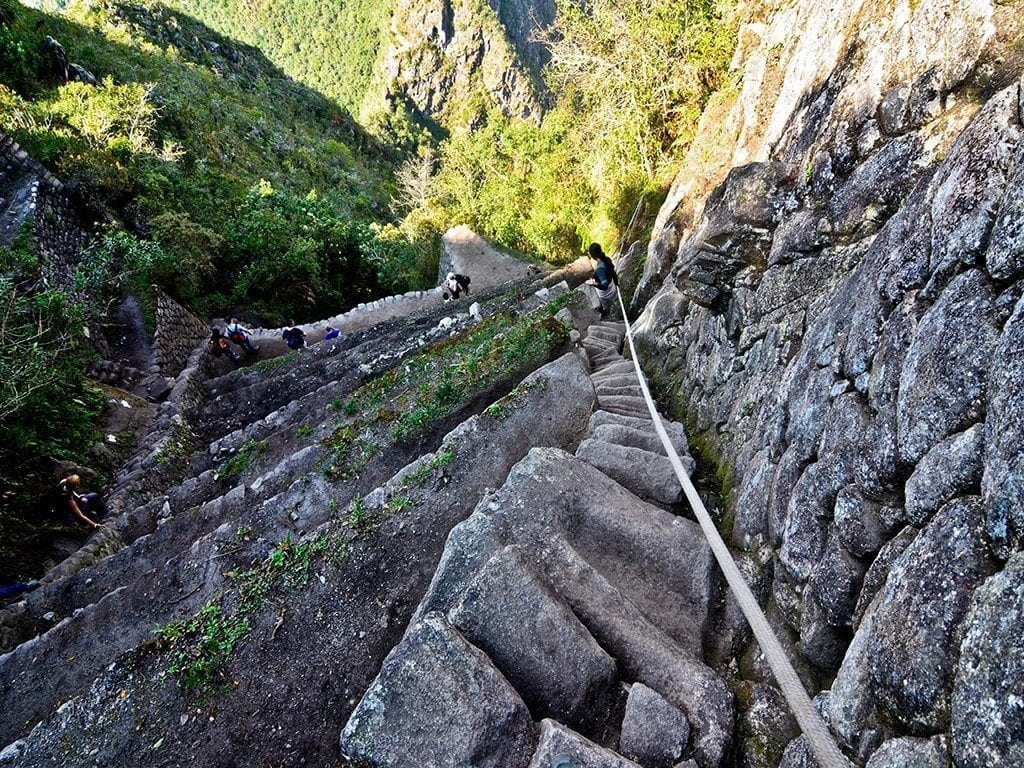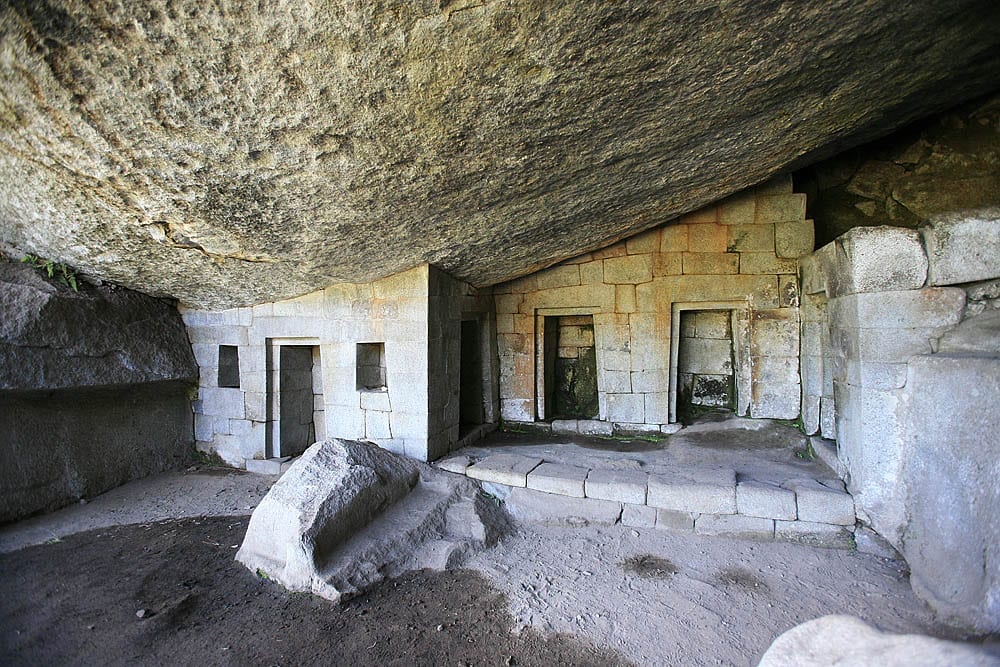Top 3 interesting Huayna Picchu Facts
James Bustamante is Native to New York but born to Peruvian parents. He has been traveling throughout Latin America since early 2003 and finally made his home in Peru. James has made his way by eating and traveling through almost every country in Central and South America.
Last Updated on February 28, 2023 by James Bustamante
Machu Picchu is one of the favorite destinations for travelers worldwide. Once in the Inca Citadel, many hikers typically want to climb one of the additional trekking peaks. The Huayna Picchu Mountain hike is the most requested attraction by tourists. Unfortunately, it is the most limited regarding permits for the Machu Picchu hikes within the Incan complex.

Taking the Huayna Picchu Mountain trek can be the topping on the cake when you visit Machu Picchu. The views from the summit are simply spectacular. In addition, it is a great way to get that picture-perfect photograph of Machu Picchu since drones are now allowed.
The biggest drawback is how difficult it can be to book access permits. This hike is so highly demanded that only a few lucky people participate in this incredible adventure.
But why is Huayna Picchu so famous? What sets this mini hike apart from others? Let’s take a look at three interesting Huayna Picchu Facts.
Hiker’s Tip: Make sure you book any additional Machu Picchu hike (Huayna Picchu or Mount Machu Picchu) at least two months in advance, with the best time to go being between May to July.
Fact #1 Huayna Picchu Means “Young Mountain” in Quecha

Huayna Picchu is a mountain in Peru that is located within the Machu Picchu archaeological site. The “Young Mountain” is often called in Quechua, the local indigenous language.
Do You Spell it Huayna Picchu or Wayna Picchu?
Huayna Picchu is also written as Wayna Picchu, and the local people of Cusco will typically prefer the second spelling. The reason is that Wayna Picchu is closer to Quechua than Huayna Picchu. Both spellings are accepted.
Where is Huayna Picchu?
Huayna Picchu is an important peak located north of the Inca Citadel. Its cobblestone steps date back to when the Incas took these stairs to reach the summit 600 years ago. People around the globe can take the same stone steps as the Inca did to reach the very top of Huayna Picchu mountain.
Its difficulty stems from its steep trail along a network of deep cliffs and rocky outcroppings. Nevertheless, you’ll take in some fantastic views from the top. Once there, you can appreciate all the splendor of Machu Picchu and the landscape surrounding it.
However, reaching the summit of Huayna Picchu is not easy. This mountain is located almost 300 meters above the Inca Citadel.
The route is estimated to reach approximately 2 kilometers as you ascend some of the steepest stone stairs you’ll see in Machu Picchu, which is why safety ropes have been placed along the path.
Fact #2 Huayna Picchu Overlooks Machu Picchu

The second on the list of Huayna Picchu facts relates to the elevation. The peak of Huayna Picchu stands at 2,720 meters (8,920 feet) above sea level and offers stunning views of the surrounding landscape, including Machu Picchu itself.
The Moon Temple in Huayna Picchu
There is a small temple that travelers can visit when climbing down from the highest floor of Huayna Picchu. The temple of the moon, as it is called, can be found halfway down the return path. The temple’s purpose remains mostly a mystery, but some scholars think it was a place to worship the Incan moon goddess. The temple t is an excellent place to explore before returning to the Machu Picchu complex.
Fact #3 Huayna Picchu is Called The Stairs of Death For a Reason

Climbing Huayna Picchu is a popular activity for visitors to Machu Picchu, but it can be a challenging and steep climb that requires a permit and careful planning. The hike can take anywhere from 1.5 to 3 hours, depending on the climber’s fitness levels and pace.
Can Children Hike Huayna Pichu?
The Huayna Picchu hike is not meant for young children. It should only be taken by travelers who are at least 12 years old. It is also not recommended for people who suffer from vertigo or have a fear of heights.
For others, you only need the courage to brave it. If this sounds like something you’d be interested in, tell your travel adviser to include it in your Peru tour package.
How Many Steps To The Top Of Huayna Picchu?

The Huayna Picchu trail consists of a steep ascent up a staircase carved into the side of the mountain, followed by a steep descent back down. The staircase has approximately 1,200 steps, so that it can be quite a challenging hike for some. However, many people find the climb to be a thrilling and unforgettable experience.
Despite its name, nobody has ever died or fallen from there, but it looks pretty perilous. So let’s add this as extra but essential to the list of Huayna Picchu facts.
During the tour of Huayna Picchu, you’ll encounter a section called the “stairs of death,” which consists of a 183-meter stretch of irregular stone steps that end in the “Temple of the Moon.”
On one side is a slippery wall, and on the other, the terrifying views of a deep gully. Metal ropes have been placed along the most challenging stretches to ensure everyone’s safety.
For those of you who still aren’t sure, there is a slightly different route; if you wish to take it easier, follow the signs that are placed along with the forks in the trail.
Reaching the top is an unforgettable experience for visitors. The arduous climb up Huayna Picchu mountain is rewarded once you reach the top. Thousands of tourists on Facebook, TripAdvisor, and other social networks describe this as the most awe-inspiring moment of their trip.
You’ll have a bird’s eye view of Machu Picchu and its surroundings, the winding network of Inca Trails connecting to Machu Picchu, and the Urubamba River hundreds of meters below.
You’ll also witness the snowy Salkantay, the Putucusi Mountain, and much more. Make sure you are going during the dry season (from March to October), as it is the best time to enjoy the sights of Huayna Picchu.
Conclusion
Does Huayna Picchu seem like a hike you’d like to do? Make sure you include it in your Machu Picchu Travel package. Contact us on the form below today, and we’ll make sure your permit is secured.
Frequently Asked Questions About Top Huayna Picchu Facts
<strong>Which is the best season to take the Huayna Picchu Hike?</strong>
As in most cases, you should try to go during the dry season, which goes from late April to August and even early September in some years.
<strong>How long is the Huayna Picchu Hike?</strong>
This hike can take you around 1.5 to 2 hours to reach the top. The return should only take you about 45 minutes.
<strong>Can I book Huayna Picchu last minute?</strong>
In most cases, no. This is due to the extremely high demand.
<strong>Can I go explore Huayna Picchu on my own?</strong>
The Huayna Picchu hike does not allow for premade groups or tour guides. You (and your friends or family) will take it on your own.
<strong>Can I pay for my Huayna Picchu reservations online?</strong>
Yes. We handle most of our payments online unless the client would prefer to pay at the bank.
<strong>Can I make a Huayna Picchu reservation on my own</strong>
Yes, of course. You can head to the Machu Picchu website and book a ticket online directly.
<strong>Is Huayna Picchu Included in the Machu Picchu Reservation?</strong>
No. Huayna Picchu requires a separate reservation.



